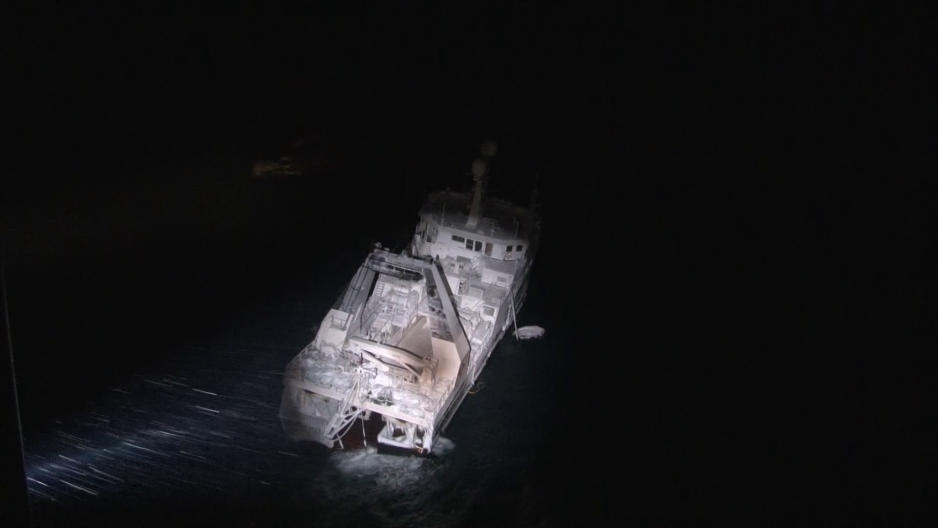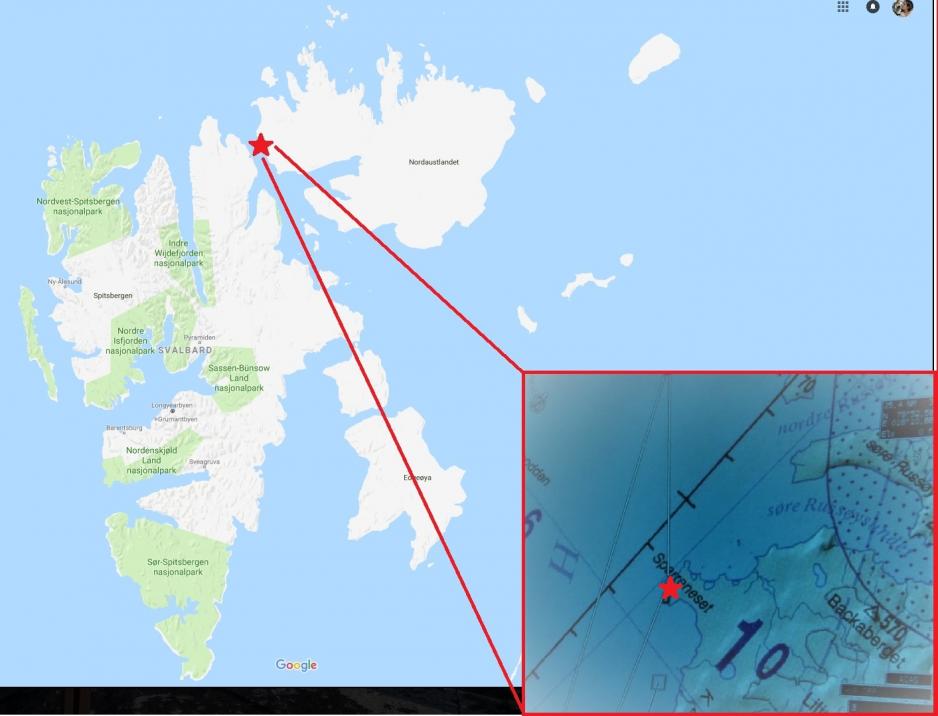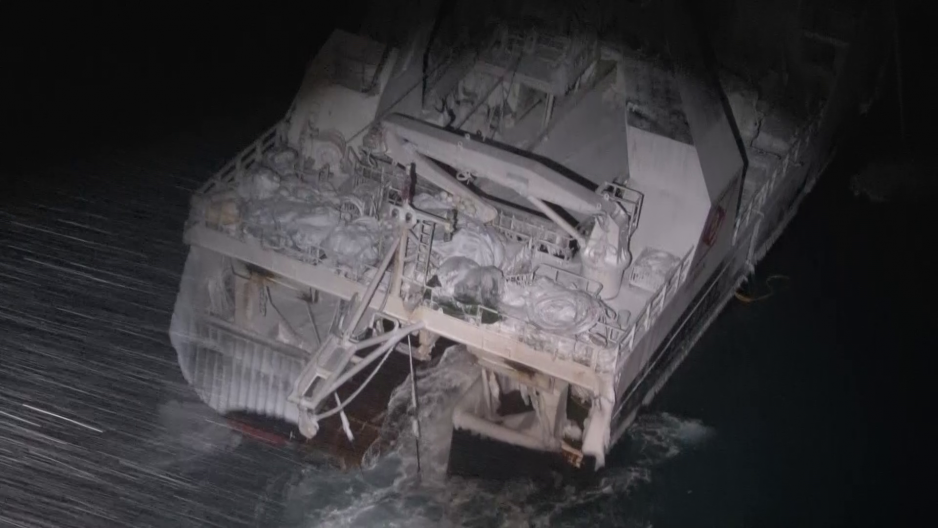Experts About Svalbard Casualty: Verging on Reckless

SAR experts are skeptical: While it is not illegal to fish in the waters where the ‘Northguider’ trawler ran aground in northern Svalbard, it nevertheless operates at the outer limits of what can be considered responsible. – It is a legitimate question, says Managing Director Arne Birkeland of Opelio AS, the shipowner.
Managing Director of Opelio AS, a subsidiary of the Brødrene Birkeland shipowners on the Norwegian west coast, says that the area in which the ‘Northguider’ was fishing is well known for prawn catching.
- We catch both there and on the northern side, he says.
- Do you make any risk or security assessment prior to heading out into areas like these?
- The risk assessment lies in what vessel one is operating, and in this being a vessel suited for ice conditions. But of course; accidents may happen – and now it has. We are now awaiting the accident report, and there are several factors that have played their part, with there being increasing winds and strong currents in the area. It is a legitimate question to ask. As long as the vessel is approved for Arctic waters and can operate in heavy ice, it is thus cleared for operating in Arctic waters.
Will learn a lesson
- You will argue that you have done what you could?
- Yes. The vessel is built for such conditions and we have to go to where we know we can catch, so our assessments focus on that. We have vessels in the Atlantic Ocean too, far away from any helicopter. But you have to have the equipment for it, and if an accident were to occur, there are lessons to learn. If a lesson from this lies in preparedness needing improvement, then that is a good thing, says Birkeland.
- It is just a shame that the Svalbard Governor’s vessel (‘Polarsyssel’, journ.note) is not available 12 months of the year, he adds.
The Svalbard Governor’s specially tailored offshore supply ship “Polarsyssel” is taken out of operations for three months every winter due to financial considerations. It then lies at bay in Ålesund.
- It was extremely dramatic. The SAR crew did a tremendous effort in managing to rescue everyone, Birkeland says about the casualty taking place last Friday in the Hinlopen Strait on Svalbard.
To trawl nets out
The ‘Northguider’ was actively fishing with two trawl nets out when it ran into problems in rough weather.
Just before 1.30 p.m. the trawler sent out emergency signals. Three hours later, SAR crew from two helicopters chartered by the Svalbard Governor managed to rescue all 14 members of the ship’s crew. They were all in good shape. The trawler, however, was wallowing in the water and took in water.
At the time of writing [Wednesday afternoon, transl.note.], the KV Svalbard was heading towards the trawler, which still lies in the Hinlopen Strait. It has some 300,000 liters of diesel on board, and the question is now whether it will be possible to bring the trawler safely to the shore without oil spilling out.
- The Coast Guard vessel arrived in Svalbard last night, Birkeland said Wednesday afternoon, and has on loaded some equipment, including oil containment booms. He adds that the professional Dutch salvage company Ardent now holds the responsibility for making assessments related to the trawler rescue mission in collaboration with the Svalbard Governor and the Norwegian Coastal Administration.
Situation report only tomorrow
- They are expecting to arrive at the trawler tonight [Wednesday night], and for the weather to provide a window of opportunity for them to get onboard. After that, they will have to consider how to proceed, Birkeland says.
- I was so relieved when I heard that everone on board had been rescued, says the managing director. He has had to answer a well of questions from both the media and Norwegian shipping authorities over the past few days.
The west-coast based ship owners now have their own staff present on Svalbard to monitor what will hopefully be a successful rescue operation for the trawler.
- Connectivity is rather limited up there, so we do not expect the first reports until the early [Thursday] morning hours, Birkeland says.

Must take season into account
Deputy Commander of the Coast Guard Steve Olsen neither wants to nor can assess this particular incident. However, he points out, the necessary basic assessment to conduct, also for own vessels, are the following items:
1) One has to look at the weather forecast, also for the longer term, even though there may also be insecurity related to these forecasts, given polar pressures and quick changes.
2) One should operate a vessel with a hull that can endure ice and its pressing the vessel towards land. An ice map is obviously also required.
3) The vessel should have sufficient engine power to pull the vessel out of critical situations. For a trawler, that would for instance be for the trawler to have power to maneuver even with the trawl nets out.
Steve Olsen, an experienced Coast Guard officer, argues that the season should also be taken into consideration when each captain makes his risk assessment.
- You have to consider whether it is clever to head out into waters like this in the holiday season when major parts of Norway, including the preparedness sections, are in a more modest mode than usual.
Enormous distances
- There IS preparedness, both at the Coast Guard, at the Joint Rescue Coordination Centers and elsewhere, and this time we were also lucky, as I understand, with both helicopters on Svalbard being available, and with the weather being good enough for them to fly in.
At the same time, the nearest ship, KV Barentshav, was 28 hours away. We were in the zone, but there are vast distances, Olsen emphasizes.
He says it is not uncommon for vessels to fish in the area where ‘Northguider’ was’, however, there are usually several vessels at the same time.
The Deputy Commanter of the Coast Guard says any captain has to make his or her own assessment, and that he himself as a captain always will include in his assessment a consideration of where potential help may come from should a situation arise in which his vessel were to need assistance.
- The fact that it is the holiday season and a quiet period both at sea and on the mainland is such an essential factor, Olsen says to High North News.

The Executive Manager of the Joint Rescue Coordination Center North Norway, Bent-Ove Jamtli, says the trawler was in luck as far as the weather goes, in that the helicopters were able to reach the vessel.
JRCC: - Shipowners must consider
- The shipowners must and should make the risk assessments, Jamtli says. He also points out that it is fully legal to operate alone both where the trawler was as well as elsewhere around Svalbard.
- What do you think of the assessments that have been made here?
- I neither can nor want to have an opinion on that. But I do know that if the weather had been just a little bit worse, it would have been hard to get there with helicopters. I also know that the nearest vessel, which is not ice classified, was 18-20 running hours away. The KV Barentshav was at Bear Island, some 30 hours away, and it is not an ice-classified vessel.
At the JRCC, we presume and expect risk assessments to also include weather conditions, potential assistance opportunities etc., Jamtli continues, and points out that all vessels have a duty to assist in an emergency situation.
- But, like I said, operating alone is not illegal.
- Should it be? Should this be regulated in some way or other?
He hesitates, then concludes:
- If I were to consider going there alone at this time of year and under those conditions, that decision would sit deep.
Poor conditions for communicating
The reports from the rescue operation say that conditions for communications were poor in the area. Emergency signals from the trawler that had run aground were received through the vessel’s crew triggering the emergency beacon, and later DSC (Digital Selective Calling) from a VHF radio.
Medium wave communications did not work until it became possible to utilize the MB transmitter of KV Barentshav.
The Manager of the SAR project at Nord University, professor Odd Jarl Borch, lets it shine through that he thinks the ‘Northguider’ trawler was operating on the verge of recklessness when running aground in the Hinlopen Strait on 28 December.
Borch is an expert on maritime crisis management, SAR operations in the High North, and heads several projects on improving security and monitoring in the North. He points out that when operating in the northern areas of Svalbard, one is operating at the limits of several resources.
- This applies both to rescue capacity as well as opportunities for limiting pollution. A heavy responsibility thus rests on anyone operating in these waters at this time of year, Borch says to HNN.
He adds that incidents and accidents do occur in all waters, and that the responsibility for risk assessment rest with the shipowners.
- I hope, even expect, that they have done a thorough analysis prior to entering into these waters this time too, Odd Jarl Borch says.
